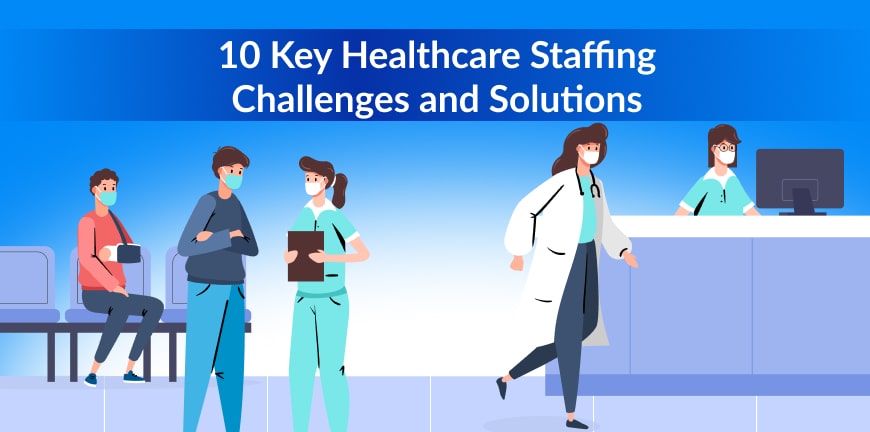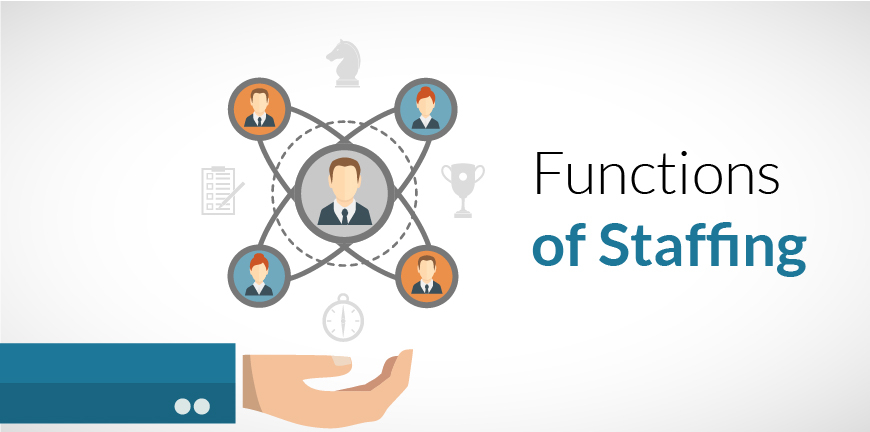
Hiring Freeze – Overview, Reasons, Examples and Effects
12/05/2025
What Are Payroll Liabilities? A Guide for Employers
13/05/2025Introduction
Staffing challenges in the healthcare industry is growing by the day resulting in delivery of poor-quality care to patients. From having skilled staff shortages to burnout, these challenges have grave consequences for patient outcomes, organizational performance efficiency and the well-being of healthcare professionals. In this article, we’ll be exploring the key healthcare workforce challenges and examine their impact on the industry as well as the strategies to address these challenges.
What are Staffing Challenges in Healthcare?
Staffing Challenges in Healthcare refer to challenges in acquiring the right personnel to work in healthcare sectors which include shortages of skilled and qualified personnel, high burnout rates and turnover and keeping up with compliance as well as hiring individuals who understand compliance. Staffing shortages in healthcare can lead to disruption especially in patient care leading to lower quality of care, higher workloads for existing staff and an increase in financial strain on the organization.
Top 10 Healthcare Staffing Challenges and Solutions
There are several staffing challenges in healthcare that affect various important aspects of the healthcare industry. However, there are solutions to counter the same. Let’s see some of the key staffing challenges in the healthcare industry and how to overcome them.
1. Skill shortages
The healthcare sector has seen drastic workforce shortages that has been impacting the delivery of patient care as well as operational productivity. With surge in healthcare demands due to various reasons including growing illnesses among individuals, the present staff is facing a mountain of pressure.
Solution:
- Exploring innovative strategies to recruit individuals both passive and active by tapping into untapped talent pools.
- Implementation of AI in the hiring process to ensure unbiased recruitment and selection of candidates
- Utilization of data analytics to predict staffing needs to allow healthcare organizations change their recruitment strategies.
2. High turnover rates
High volumes of healthcare workers are leaving the healthcare industry due to low recognition, absence of career growth and a lack of rewards. This not only disrupts operations but also requires costly recruitment and training efforts. It’s important to develop effective retention strategies to keep them within the organization.
Solution:
- Help employees understand their roles and responsibilities clearly so that they don’t feel overwhelmed when on the job
- Have open communication channels that allow employees to share insights and feedback about their work or other issues in the workplace that is bothering them
- Provide clear career growth path and provide them with the right opportunities and training they need to grow.
- Implement reward systems that acknowledge their efforts and contributions and encourage them to do even better.
3. Employee Burnout
The healthcare industry is brutal and for obvious reasons there is a lot of pressure and cause for caution. This causes individuals to experience enormous amounts of stress, extreme burnout, leading to decline in mental health well-being. This in turn leads to exit of employees faster, and low-quality care provided to patients.
Solution:
- Workshops that teach stress reduction techniques and coping mechanisms with work related stress.
- Delegate tasks properly so that workload is distributed properly and there is lesser stress on employees.
- Provision of easy access to mental health resources, including counselling services
- Encourage employees to share experiences and encourage each other in times of distress.
- Develop recognition programs to acknowledge achievements of individuals to align with organizational goals.
4. Long hours of work
Healthcare professionals face long work hours due to the increase in patient flow at almost all healthcare centres. This is impacting their physical and mental health leading to low engagement. And for employers this has led to higher turnover rates as well as delivering low quality patient care due to high levels of exhaustion in healthcare workers.
Solution:
- Implement flexible work schedules that allow healthcare professionals to work as per their convenience but also get the work done at the same time.
- Create contracts that mentions adjustable work hours to meet the diverse workforce needs.
- Integrate systems that automate routine tasks and facilitate the exchange of information easily while reducing manual workload.
- Manage patient data and follow up with patient care through virtual monitoring, decreasing the need for in-person consultations.
5. Financial Stress
Healthcare costs have shot up in recent years. Low budgets has increased the need for finding ways to maintaining quality healthcare while managing expenses. This financial strain can extend to employees, leading to stagnant wages and increased stress, thereby impacting job satisfaction and retention rates.
Solution:
- Have workshops and training sessions that cover key financial topics like effective budgeting, debt reduction strategies.
- Provide employees with the right financial planning tools and resources and help them form financial strategies that align with their needs.
- Partner with banks to offer employees preferred rates on financial products
6. Inadequate workforce management
Improper healthcare management can cause disruptions in healthcare operations, leading to wasted resources and low patient care delivery. This happens due to miscommunication, lack of channels for communication.
Solution:
- Create a planning model that help organizations predict future staffing needs based on their analysis of patient flow and patient care demands.
- Develop proper communication channels to ensure that staff are managed well and have means to communicate and address concerns quickly.
- Utilization of tools to manage employee schedules effectively and ensure transparency
- Optimize resource allocation to enhance responsiveness to changing patient needs.
7. Diversity and inclusion
Acquiring healthcare individuals from diverse backgrounds is quite challenging but also very essential. A diverse workforce showcases the company’s empathy and understanding towards people from various backgrounds resulting in better patient outcomes.
Solution:
- Partner with educational institutions and other communities to acquire talent from diverse backgrounds.
- You hiring strategies must be standard so as to accurately measure competencies and experience minimizing bias and ensuring the selection of the best candidates
- Conduct training sessions to encourage employees understand about other cultures and respect it, creating better collaboration
- Organize leadership programs that emphasize inclusive practices and importance of diversity in decision making.
8. Regulatory and Compliance issues
Compliance in the healthcare industry is extremely crucial because noncompliance can compromise with the safety of healthcare workers, quality of patients care and hurt you company’s brand image and can lead to legal issues. However, ensuring data security and telemedicine approach and acquiring individuals with compliance knowledge is tough.
Solution:
- Ensuring the installation and implementation of right security systems across all levels in the organization is crucial.
- Conduction of regular cybersecurity training for healthcare staff to ensure safety of patient information.
- Implement a thorough screening process to ensure proper assessment of employee background, whether they are ethical and compliant, before hiring them.
- Identify the areas of noncompliance as well as assess the current compliance efforts and practices being implemented.
- Maintain accurate billing and coding practices as it helps you stay updated with the current and trending coding guidelines, conduct regular audits and train staff on the same
9. Fight against an aging workforce
One of the pressing challenges in the healthcare industry is its aging workforce with many experienced individuals nearing retirement. This leads to risk of knowledge gaps that are extremely hard to fill leading to operational deficiency.
Solution:
- Organizations must create mentorship programs that have defined goals and spells out the roles effectively as well as the expected outcomes from both the trainer and the mentees.
- Interaction with experienced staff encouraging them to share their clinical expertise and insights and also learning about new technologies and practices from the new, younger employees to cover all knowledge bases.
- Implementation of training programs to bridge skill gaps and help them understand the emerging technologies.
- Foster a culture of continuous learning by providing access to advanced education and certification programs.
10. Workplace safety
Healthcare industries may have risks of conflict very often, prone to violence in the workplace. Safeguarding healthcare workers and patients from threats is crucial to create a safe and supportive environment.
Solution:
- Conduction of security audits to identify potential areas of concern and risks within the company to implement targeted measures to tighten the security.
- Develop proper plans to manage violent incidents effectively, focusing on clear communication and coordination among staff.
- Conduct regular workshops for employees to help them understand conflicts of interest and manage them using the right techniques.
- Help staff navigate their anger or aggression in the right way by encouraging them to express their feelings verbally.
With the growing demand for healthcare services by the day, the need for skilled, qualified healthcare professionals has also increased. But to overcome the staffing challenges in healthcare efforts from both the healthcare organizations and staffing agencies is important. That means, efforts must not end at just finding and hiring the right personnel. It’s also important to incorporate measures to engage and retain these professionals to ensure quality patient care and operational productivity.
Frequently Asked Questions (FAQs)
1. What causes staffing shortage in healthcare?
Higher demand for healthcare services, combined with a retiring workforce, is a primary cause of staffing shortages in healthcare. Some other factors include employee burnout, low compensation provided to employees, lack of recognition leading to higher attrition rates, and poor workplace safety standards.
2. How do staffing challenges impact patient safety?
There are higher workloads for healthcare workers which eventually causes burnout leading to lower engagement affecting patient care. Not having enough as well as the right staff can have catastrophic results concerning patient care.
3. What is the biggest challenge the healthcare industry faces today?
Some of the biggest challenges in the healthcare industry is access to healthcare, workforce shortages, data security concerns, quality of patient care and safety, keeping updated information regarding regulatory compliance, employee burnout and more.
4. What are the staffing issues in healthcare?
The biggest staffing issues in healthcare are investing in the right recruiting methods, hiring skilled and qualified staff, recruiting candidates from new job sources, recruiting candidates with compliance knowledge.
5. What are the challenges of teamwork in healthcare?
Some of the challenges of teamwork in healthcare include changing roles of employees, changing workplace settings, healthcare hierarchies, instability of teams, unresolved disagreements among employees.
Contact Us For Business Enquiry

Kasthuri R
Kasthuri R is the Co-Founder & Executive Director at ALP Consulting, bringing over 23 years of experience in search, staffing, and HR consulting. She has been instrumental in driving ALP’s recruitment, employee leasing, and executive search practices across diverse industry verticals. With deep expertise in talent acquisition, HR strategy, and operational management, Kasthuri has built scalable, client-focused solutions that enhance workforce efficiency. Her strategic leadership continues to steer ALP Consulting toward innovation and excellence in people management.




